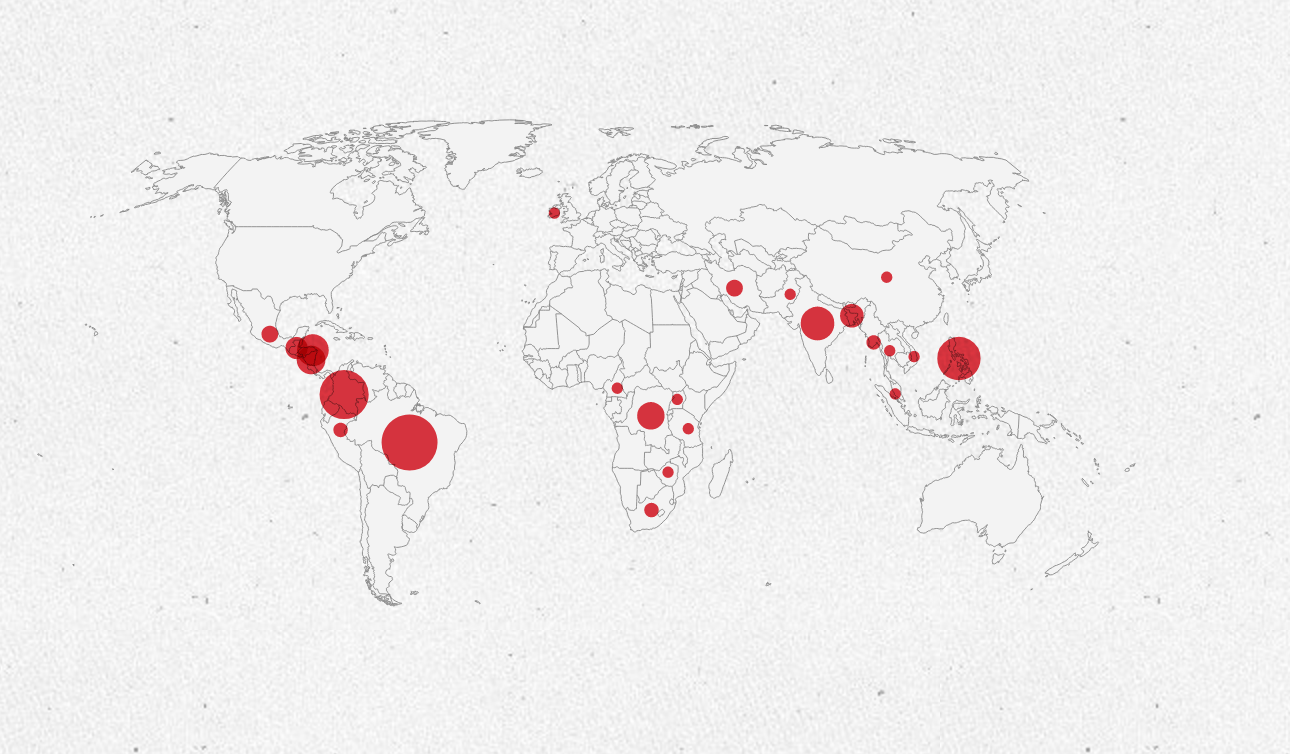The UK-based non-profit Global Witness put out their annual tally of those murdered protecting land, water and wildlife in their communities, and the news is not good.
The world is getting more dangerous for these activists: In 2016, 200 people were murdered, up from 185 the previous year. “The phenomenon isn’t just growing, it’s spreading,” the report’s authors write. “Global Witness documented murders in 24 countries, compared to 16 in 2015.”
Sixty percent of the murders the group counted were in Latin America, and 49 of them — roughly a quarter of those counted — were in Brazil alone. “Brazil has consistently been the deadliest country for land and environmental defenders since Global Witness began compiling data,” the report states.
This is largely because of Brazil’s Amazon rainforest, where disputes are increasingly common between indigenous people and the farmers and corporations who, often with government support, want to put the forest’s resources to use.
These clashes over land use can turn violent and sometimes deadly; in one incident reported in The Guardian in May of this year, farmers attacked indigenous people who did not want farmers to fence off their traditional territory. The mob hacked at the protestors, in one case cutting off an indigenous man’s hands and feet. Thirteen people were hospitalized.
Global Witness suspects that many other clashes go unreported, and that, around the world, the actual number of environmental and land rights activists murdered is far higher than what the group is able to tally. In its report, it noted that 16 people were killed defending Brazil’s forests from loggers, and a growing number were killed fighting against larger-scale agriculture. Both industries have a powerful lobby in Brasília, and Global Witness lays blame at the feet of the country’s government for failing to protect those in these industries’ paths.
“Despite the shocking and growing number of murders, the Brazilian government is actually rolling back protection for environmental defenders,” the report’s authors write. They also cast blame on international investors. One of the murders the group followed was that of Nilce de Souza Magalhães, an elderly activist murdered opposing the Jirau Dam deep in the Amazon, near Brazil’s border with Peru. The project has been approved to receive financing under the UN’s Clean Development Mechanism to fund projects that reduce emissions.
Outside of Brazil, the report noted large upticks in the number of activists murdered in Colombia and India, and found that Honduras remains the most dangerous country for activists as measured by deaths per capita. It also found that over 40 percent of those murdered around the world were indigenous people. And often, the report’s authors write, these murders go unpunished. “That sends a message to perpetrators that they can brutally silence these people and get away with it,” Ben Leather, a campaigner with Global Witness, told InsideClimate News.
This year, The Guardian will be partnering with Global Witness to report activists deaths as the murders happen. “At this current rate, chances are that four environmental defenders will be killed this week somewhere on the planet,” the newspaper writes. One of the most recent incidents it has logged took place in Brazil in May, when 10 settlers were killed resisting an attempt by police to evict them.
